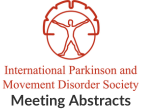Association of GALC, ZNF184 and rs2280104 with PD in southern Chinese
Objective: The aim of the study was to investigate the relationship between 12 single nucleotide polymorphisms (SNPs) and Parkinson’s disease (PD) in Chinese population. Background:…Identification of gut microbial genes in Parkinson’s disease by shotgun metagenomic analysis
Objective: To carry out deep analysis on gut microbiome in patients with Parkinson’s disease (PD) and to evaluate the potential application for diagnosing PD patients…Lysosphingolipids accumulation in macrophage model of Gaucher disease
Objective: The aim of this study was to investigate if GCase deficiency in macrophage model of GD lead to lysosphingolipids accumulation. Background: Mutations in the…The Parkinson’s Families Project: A family-based study of early onset and familial Parkinson’s disease
Objective: The aim of this study is to identify new genetic variants that cause or predispose to Parkinson’s disease (PD). Our secondary aim is to…Further insights into excitatory-inhibitory balance of the primary motor cortex in Parkinson’s disease: A triple-pulse stimulation study
Objective: To characterize intracortical facilitation and inhibition of the primary motor cortex (M1) in Parkinson’s disease (PD) using transcranial magnetic stimulation (TMS). Background: Since introduction…Olfactory dysfunction, sleep disturbances, neuronal loss, and regional brain atrophy in an inducible mouse model of Alpha-Synucleinopathy
Objective: The objective of this work is to develop a unique mouse model of spreading α-synucleinopathy to accelerate the development of novel disease-modifying treatments for…Substantia nigra T1 maps for the diagnosis of Parkinson’s disease
Objective: To evaluate if the T1 value (measured in ms) in the substantia nigra (SN) is reduced in Parkinson disease (PD) patients as compared with…Hypometabolism of the posterior parietal cortex in Parkinson’s disease with mild cognitive impairment predicts the conversion to dementia: 5-year longitudinal observations
Objective: To investigate the neuroimaging marker that predict the conversion of mild cognitive impairment (MCI) to dementia in Parkinson’s disease (PD) patients. Background: Patients with…Relationships between specific subtypes of mild cognitive impairment and grey matter atrophy in Parkinson’s disease
Objective: Our aim was to investigate grey matter (GM) atrophy patterns in Parkinson’s disease patients with normal cognation (PD-NC) or with mild cognitive impairment(PD-MCI)using voxel…In vivo MRI signatures of hippocampal subfield pathology in patients with Parkinson’s disease and psychosis
Objective: To study the role of hippocampal subfield pathology in the genesis of psychotic symptoms in patients with Parkinson's disease (PD) by comparing the volumes…
- « Previous Page
- 1
- …
- 80
- 81
- 82
- 83
- 84
- …
- 177
- Next Page »
